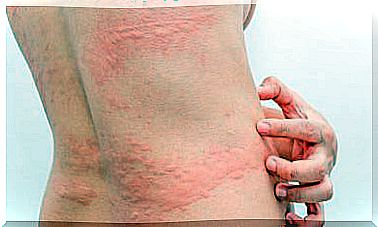Risk Factors For Perinatal Asphyxia

Perinatal asphyxia is when a newborn baby lacks oxygen. This can lead to the death of the child. Perinatal asphyxia can occur before, during or after birth and for various reasons.
According to data from a recent study, approximately 20% of babies who suffer from perinatal asphyxia die and those who survive usually experience permanent neurological problems.
There are several situations that can cause problems with a newborn baby. These problems can occur before, during or after the baby is born.
This article will focus on exploring the latest research on this topic.
One of the leading causes of neonatal deaths

The World Health Organization (WHO) includes asphyxia as one of the leading causes of death in newborns.
Often, doctors will notice that the baby lacks oxygen during birth if the newborn does not cry or move. Another sign of perinatal asphyxia in a newborn is that the baby’s body is limp.
Also read: Diseases in newborns that require surgery
In both situations, doctors need to act as quickly as possible. Doctors need to monitor the situation closely and try to find out what has caused the asphyxia in order to come up with the best solution.
A baby who suffers from a lack of oxygen before birth may require an emergency cesarean section.
What is the cause of perinatal asphyxia?
Perinatal asphyxia can be caused by several different factors, and these can vary depending on whether the asphyxia occurs before, during or after birth.
Perinatal asphyxia before birth
This type of asphyxia can occur during any month of pregnancy, although it most often occurs closer to the baby’s due date.
This is why routine medical examinations are important to check that everything is going well for both the baby and the mother. Some of the factors that can cause perinatal asphyxia include:
- Anemia in the mother
- Bleeding during pregnancy
- Incorrect placement of the baby’s head
- Prolonged pregnancy (more than 42 weeks)
- Infection in the mother’s body.
During childbirth
During childbirth, certain dangerous situations can occur. Although doctors are ready to handle any situation, it is important to know what can happen in extreme cases:
- The umbilical cord is wrapped around the baby’s neck or gets compressed at some point
- Preeclampsia (pregnancy poisoning), which increases the mother’s blood pressure
- A respiratory problem for the mother
- Use of birth canal during childbirth
- A birth that lasts longer than it should.
After birth

Despite having already undergone childbirth, the risk of suffering from perinatal asphyxia may be present, even after birth. The reasons include:
- Premature birth, as the organs of a premature baby are not strong
- Congenital malformation
- Lung disease or heart disease
- Severely underweight babies.
If a baby suffers from mild asphyxia, they usually cry too much, are irritable and have a more visible musculature. However, this generally lasts no longer than a day.
Also read: How to care for a newborn for the first few months
On the other hand, if the situation is more serious, the newborn may have cramps, lack the sucking reflex needed for breastfeeding, and have very weak muscles.
Neurological damage
How quickly the perinatal asphyxia was treated and whether it caused the newborn to have seizures greatly affects the likelihood of the baby suffering neurological damage.
Neurological damage generally occurs if the baby had any seizures or seizures, if the asphyxia continued for an extended period of time, or if other factors are added. For example, the risk of suffering from neurological damage is great if the baby has any kind of failure of the cardiovascular or lung system.
Another factor that can increase the chances of neurological damage is if the newborn has acidosis, which is when too much acid accumulates in the blood.
Due to the careful monitoring during pregnancy, many factors that cause perinatal asphyxia can be prevented. However, there are some circumstances that are uncontrollable.
While some situations are out of our control, it is necessary to have qualified and attentive staff present before and during the birth who are experienced and familiar with the various situations that may arise in order to have a successful birth. Perinatal asphyxia can be fatal, so any precaution is necessary.









